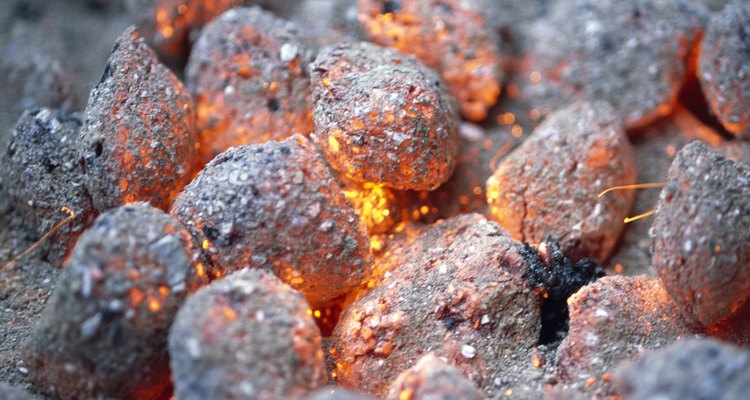
Manufacturers of many barbecue grills and countertop ovens are quick to tout their devices' use of infrared cooking. This trendy technology is said to provide fast cooking times and beautifully-browned foods, while using less energy than other cooking methods. All of these claims contain a measure of truth, though the promotional brochures don't usually delve far into the underlying science. Even fewer go on to explain that you've probably already used infrared cooking methods for years.
Transferring Heat
If you've ever had the misfortune to grasp a hot skillet, you have a vivid understanding of how effectively hot surfaces can transfer heat. That direct form of heat transfer is called conduction. If the heat travels through air or water it's referred to as convection, a slower and less efficient process. Infrared cooking methods rely on radiant energy, much as your microwave oven does. It's less efficient than direct heat conduction but much quicker than conventional roasting or grilling, because it causes the food to heat itself.
An Infrared Energy Primer
Radiant energy comes in several forms, including radio waves and the visible light our eyes are able to detect. On the light spectrum, infrared is just below the lowest-frequency red that human eyes can see. Think of it as the visual equivalent of a bass sound that's too low for human ears, but clearly audible to many animals. Like the radio waves in your microwave oven, these waves of invisible light carry a lot of energy, which agitates the molecules in organic substances such as meat or vegetables. That's how the sun can give you a nasty burn at a distance of millions of miles, despite the relatively low temperature involved.
How Infrared Cooks
Like your sunburn, the effect of infrared cooking is felt primarily at the surface of the food. The molecules receiving the incoming infrared radiation are agitated and vibrate at high speeds, creating friction and generating heat directly within the food. Its effect is very rapid in the affected area, quickly creating very high temperatures. This heat is conducted slowly into the center of the food through conduction, eventually cooking the middle as well. Many forms of infrared cookery also generate conventional convection heating, which helps cook your foods the rest of the way.
Sources of Infrared Energy
A number of infrared energy sources are available to cooks. The oldest is a simple bed of coals from hardwood or charcoal, which emits high volumes of infrared energy along with conventional convection heat from combustion. The broiler in your oven works by superheating an element or a ceramic grate until it emits infrared energy. The infrared burners on gas barbecue grills work in much the same way, simulating the infrared searing provided by charcoal grills. Small countertop appliances apply an electric current to quartz, which requires very little current to generate infrared energy. This makes efficient use of electricity, and is why the manufacturers of these appliances promote them as an environmentally-friendly option.
Related Articles

Why Heat Does Not Transfer Through a ...

What Is Charbroiling?

Are Halogen Heat & Infrared Waves Safe ...

Example of Passive Solar Energy

How to Cook With Radiant Heat

How to Cook With a Reverse Flow Smoker

How to Light a Propane Barbecue Grill

How Does Ultraviolet Light Affect ...

How to Cook With an Infrared Burner on ...
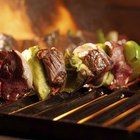
Tips on Grilling With the Char-Broil ...

How Does a Tanning Bed Work?

Glass Scalp Rake for Hair Growth

How to Rotisserie Cook Without a ...

What Is the Best Cookware for Electric ...

How Does Exposure to Ultraviolet Light ...

Can You Use a Glass Pan to Cook a Roast?

Does Food Lose Nutritional Value After ...
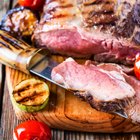
Convection Broiling Vs. Convection ...
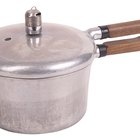
Why Does Food Cook Faster in a Pressure ...
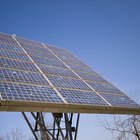
Appliances That Use Solar Energy
References
- On Food and Cooking: The Science and Lore of the Kitchen; Harold McGee
- Amazing Ribs.com: The Thermodynamics Of Cooking And How Different Cooking Methods Work
Writer Bio
Fred Decker is a trained chef and prolific freelance writer. In previous careers, he sold insurance and mutual funds, and was a longtime retailer. He was educated at Memorial University of Newfoundland and the Northern Alberta Institute of Technology. His articles have appeared on numerous home and garden sites including GoneOutdoors, TheNest and eHow.
Photo Credits
Goodshoot/Goodshoot/Getty Images